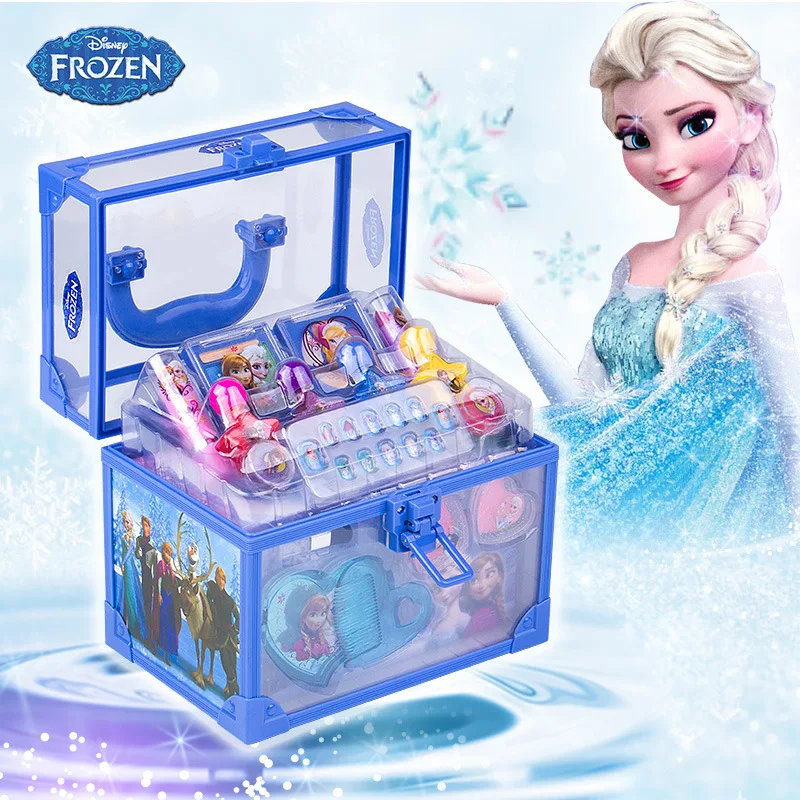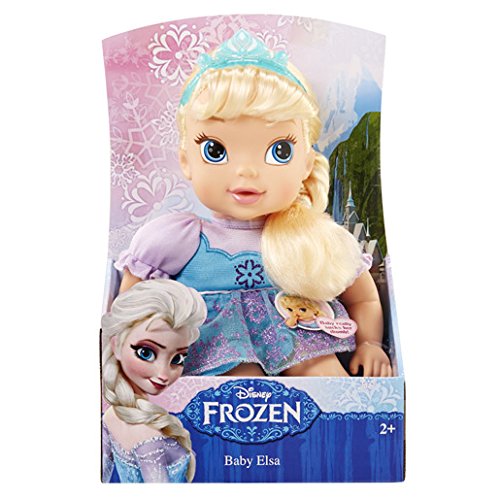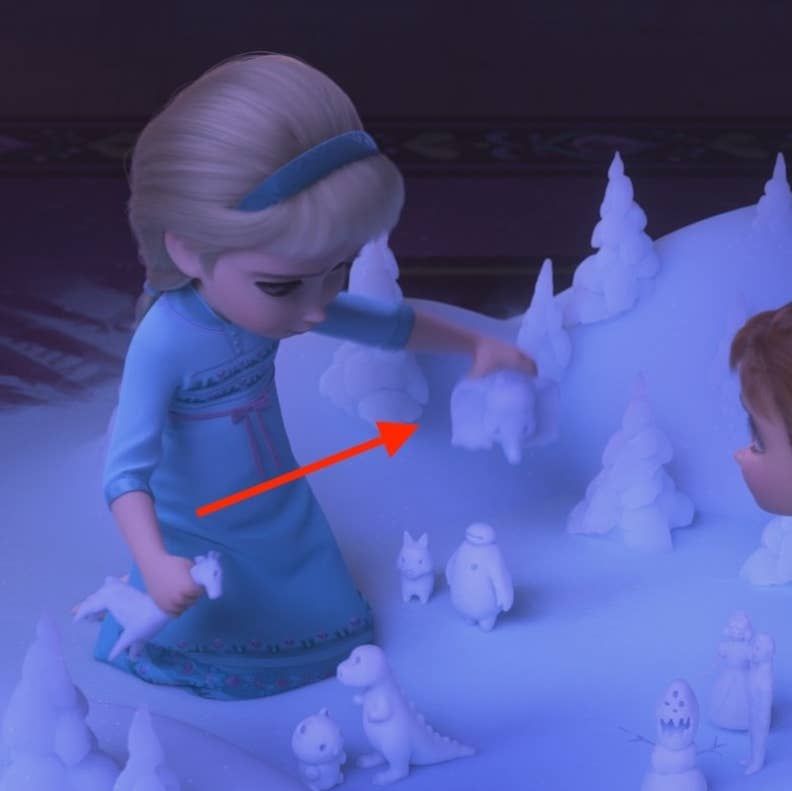Frozen baby feeding
Storing and Thawing Breast Milk
You may not always be with your baby when they want to eat. This may be when you're returning to work or school, need to run errands, or want a night out with friends. Storing breast milk makes this separation easier, by giving your baby's caregiver breast milk to feed your baby. That way, your baby gets the benefits of breast milk while you are apart.
When you're storing breast milk, you can use it fresh, or you can freeze it for use later. Either way, there are things you should keep in mind to keep the milk safe for your baby. These guidelines change depending on whether you're storing fresh breast milk or thawing frozen breast milk.
Ask your WIC breastfeeding staff what storing options make the most sense for you and your baby.
Guidelines for Storing Fresh Breast Milk
If you are storing fresh breast milk, follow these guidelines for how long the milk can be safely stored. When storing in the refrigerator or freezer, store the milk in the back, where the temperature is most constant.
These guidelines are for healthy, full-term babies.
| Place | Temperature | How Long |
|---|---|---|
| Countertop or table | Room temp. (77°F or colder) | Up to 4 hours |
| Refrigerator | 40°F or colder | Up to 4 days |
| Freezer with separate door | 0°F or colder; | Within 6 months is best, up to 12 months in acceptable |
Guidelines for Storing Fresh Breast Milk
These guidelines are for healthy, full-term babies
Guidelines for Storing Thawed Milk
If you're thawing frozen breast milk, follow these guidelines for how long the milk can be safely used. Remember: Thawed breast milk cannot be re-frozen.
| Place | Temperature | How Long |
|---|---|---|
| Countertop or table | Room temperature (77°F or colder) | 1-2 hours |
| Refrigerator | 40°F or colder | Up to 24 hours |
Guidelines for Storing Thawed Milk
Tips for Safely Storing and Thawing Breast Milk
Follow these tips for safely storing and thawing your breast milk.
Storing Breast Milk
- Store your milk in clean glass or BPA-free plastic bottles with tight lids.
- Label the bottle with the date you pumped the milk. If your baby will be with another child care provider, write your baby's name on the label, too.
- Cool the milk as soon as you pump it. When you're out of the house for several hours, such as for work or school, put your milk in an insulated cooler bag with frozen ice packs. Otherwise, put it in the back of the refrigerator or freezer, not in the doors. It will stay colder that way.
- Know that it's normal for breast milk to be different colors, depending on what you ate. It's also normal for the fatty part of the milk to separate. You can gently mix it back in when thawing/warming the milk.
Freezing Breast Milk
- Freeze your milk in small batches of 2-4 ounces, enough for a single feeding. You can freeze smaller portions if your baby is premature, or larger portions if your baby is older.

- Chill fresh milk before adding it to milk that is already frozen.
- Leave about an inch of space at the top of the container. Milk will expand as it freezes.
- Tighten bottle caps or lids only after the milk is completely frozen.
- Store milk in the back of the freezer. Don't keep it in the freezer door.
Thawing and Warming Breast Milk
- Use the oldest milk first. Practice first in, first out (FIFO).
- To thaw frozen milk, hold the frozen bottle or bag under lukewarm running water. You can also thaw it in the refrigerator or in a bowl of warm water.
- Swirl the milk gently to mix. The fatty part of the milk may have separated.
- You do not have to warm milk from the refrigerator. You can feed it to your baby cold or room temperature. If you do warm your milk, test the milk temperature by dropping some on your wrist. It should be comfortably warm, not hot.
- Do NOT microwave your milk. Microwaving breaks down nutrients and creates hot spots, which can burn your baby's mouth.

Breastfeeding gives babies a healthy start—and is good for moms, too.
Read More
Breastfeeding Basics
Learn how milk is made, when to nurse, how long babies nurse, and more.
Read more
Talk to Your Family about Breastfeeding
Talk about why you choose to breastfeed, and ask for your family’s support.
Read more
Many moms worry about low milk supply, even though most make exactly what baby needs.
Read More
When Breastfeeding Isn't Working
Remember, help is available and there are solutions
Read more
Steps and Signs of a Good Latch
These tips help you get a good latch—and know if you have one.
Read more
Get tips for talking with your employer about pumping at work
Read More
Your Breastfeeding Rights
Know your rights to breastfeed in public and at work.
Read more
Using Bottles with a Breastfed Baby
Planning to be apart from baby? Find tips for feeding baby with expressed milk.
Read more
New to milk expression? Here’s what you need to know before you get started.
Read More
Finding a Breast Pump
Here are options for finding a breast pump at low cost.
Read more
Making Milk Expression Work for You
Get tips and see how pumping can help solve your breastfeeding challenges.
Read more
See More in Breastfeeding 101 >
See More in Common Questions and Challenges >
See More in Going Back to Work >
See More in Expressing and Pumping Milk >
10 Things to Do with Frozen Breast Milk
Did you pump so much milk that you now have a freezer full of breast milk and don’t know what to do with it? I often read about moms tossing out hundreds and thousands of ounces of breast milk. Stop right there! Don’t toss out all that hard work. Put that milk to use! Here are 10 things you can do with frozen breast milk.
1. Feed your baby when you’re out and about.

When you know you have extra breast milk, and you won’t get engorged from pushing out a nursing session, or you simply need milk to bribe your infant while you’re out, take a bottle and some previously frozen breast milk with you and feed your baby. Then once you get home, you can pump and freeze some fresh milk to use several months down the road.
2. Breast milk doesn’t have to be consumed as a liquid.
You can make ice cream out of breast milk or toss it into the blender with some fruits and vegetables for a delicious smoothie to feed your infant or even an older child! You usually have to pour a liquid into the blender to make it work properly as it blends fruits and vegetables. So instead of using water or whole milk, defrost some breast milk and pour it in for a healthier option for your child.
3. Make some breast milk popsicles.
Not only are these healthy, but they often provide relief to a teething baby. Whether you’ve mixed in some fruits or vegetables or just kept it plain, chewing on a breast milk popsicle is much more rewarding than chewing on a frozen silicone or gel toy. You can even put breast milk ice cubes in a mesh fresh food feeder or a silicone feeder to help provide relief to your teething baby.
You can even put breast milk ice cubes in a mesh fresh food feeder or a silicone feeder to help provide relief to your teething baby.
4. Defrost some breast milk to use with baby cereal.
Why use water when you have a stash of milk?! Baby cereal is known to provide iron and help babies put on weight. And while mixing in some breast milk is beneficial to all infants, it can be a great idea for those who won’t breastfeed but will eat the milk in foods like cereal.
5. Donate extra breast milk.
Did you know that there are organizations that will accept your frozen breast milk for donation? No, it does not always need to be fresh. You can donate frozen milk instead of throwing it away. Contact local organizations such as La Leche League or your local hospital for more information on how you can donate breast milk and help families in need.
6. Breast milk does not always need to be used as food.
As a source of vitamins, proteins, and fats, giving your child a milk bath can be healthy and make for a fun photoshoot.
7. Does your child have eczema?
The fats and proteins in milk leave your baby’s skin soft. Aside from using it in a milk bath, you can make lotion, soap, or chapstick to soften your baby’s skin.
8. Put it in baby’s eyes.
Breast milk can also clear up your baby’s gooey, red eyes. Make sure it’s the right temperature and use it as eye drops. I’ve seen my infant’s eye go from swollen and red to perfectly normal in under 24 hours, so I’m telling you from experience! It’s harmless to your baby’s eyes and gets the gunk right out. It’s also much easier to wipe off your baby’s eyes than using water and a washcloth and having to rub your baby’s eyes.
9. Use for stuffy noses.
If your child is congested, but you can’t understand all the ingredients used in saline drops? Just put a couple of drops of breastmilk to clear that baby right out. It’s a much gentler liquid than saline and doesn’t come with a list of ingredients.
10. Breast milk isn’t just for babies!
You can even use breast milk on your own skin, eyes, or an older child for the same benefits!
Don’t let that liquid gold go to waste, mamas!
How to freeze breast milk and store it properly
While the baby is breastfeeding, it is recommended to feed on demand. On average, the baby eats every 2-4 hours. But this does not mean at all that a nursing mother should not leave the house for any business for a period of time longer than the breaks between feedings. It is quite possible to feed the baby with expressed breast milk one or more times. This product is much better than any, even the most expensive substitutes.
On average, the baby eats every 2-4 hours. But this does not mean at all that a nursing mother should not leave the house for any business for a period of time longer than the breaks between feedings. It is quite possible to feed the baby with expressed breast milk one or more times. This product is much better than any, even the most expensive substitutes.
Therefore, if a breastfeeding mother has the opportunity to freeze breast milk in advance, it is necessary to gradually create a milk “bank”. Subsequently, it can be used to feed a child in the absence of a mother, having previously thawed the milk correctly.
Can breast milk be frozen?
If the choice is between a expressed product (which has been frozen) or a substitute (milk formula), then the baby will definitely benefit from its own mother's milk. It retains most of all the nutritional components necessary for the baby, vitamins and microelements, immune factors. If the pumping procedure followed by freezing of breast milk is carried out correctly, the product will not deteriorate.
How to collect milk correctly?
If you need to feed your baby 1-2 times while the woman is away from home, it is not necessary to freeze the collected milk. This product can be stored at room temperature (up to 4-6 hours if the ambient temperature is not higher than 25-26 °C) or refrigerator (up to 3 days). In addition, for one or two feedings, you can pre-store milk by hand expressing it.
But if you need regular feeding of the baby in the absence of the mother and you need to freeze breast milk, you should buy a breast pump - manual (with a piston) or automatic. Before you pump, you need to prepare everything you need:
- if it is a manual expression, you will need containers (previously sterilized) and a towel to dry your hands, to protect clothes from drops;
- if this is a breast pump, it must first be washed, dried and assembled according to the instructions, after thoroughly washing your hands with soap and water.
The breast milk collection algorithm is simple: before starting the procedure, you need to wash your hands and find a comfortable place where no one will disturb you throughout the session.
In what container should milk be stored?
Modern breast pumps are equipped with handy bottles for storing pre-collected breast milk. In addition, special sterile container bags with applied divisions and a zip fastener are used. If these are not containers from a breast pump or bags, it is worth considering some simple requirements for containers and utensils in which breast milk is planned to be stored.
- It is worth refusing to use glassware: during the freezing process, it can burst, and when defrosted, some of the beneficial components of milk will remain on its walls.
- It is important not to use plastic containers or polycarbonate bottles, even if sterilized. The composition contains bisphenol A, a dangerous compound that passes into breast milk (and any other food) when heated. For any baby products, including expressed milk, you need to purchase a plastic container marked "BPA free", they do not contain a dangerous compound and will not harm children's health.

- When using reusable containers, each time they are empty, they must be thoroughly washed and sterilized.
- Bottles or other containers should not be filled completely, but three-quarters, because when freezing, the liquid expands, its volume becomes larger.
How to freeze expressed breast milk?
After the mother has decanted, fill the bottle or jar to ¾, close the lid tightly. If it is a storage bag, it must be bled out of air before closing the zipper. On the container you need to stick a label on which the date and exact time of milk collection are indicated. Then all the containers must be cooled in the conditions of the refrigerator, and only then put into the freezer. Such a phased approach is necessary in order to preserve all the nutrients in the product, and the beneficial microflora does not die.
Ideally, portions of no more than 100-120 ml should be frozen, they can then be thawed and fully used for feeding or preparing complementary foods. If the child needs a larger portion, it is acceptable to defrost two packages and mix them.
If the child needs a larger portion, it is acceptable to defrost two packages and mix them.
It is permissible to add new portions of the expressed product to the frozen product, but it must first be cooled. The frozen portion should not be thawed. Warm, freshly obtained milk is not added to already frozen!
Another option is to collect chilled milk, periodically adding new expressed doses to the cooled one in the refrigerator, and then, when a full portion is collected, already to freeze.
Shelf life
The key to storage is maintaining a constant low temperature. To achieve this, it is recommended to place the product close to the rear wall of the chamber, as far as possible from the door. If it's an auto-defrost freezer, it's best to store the bags in the center of the freezer, avoiding the walls.
If you have a separate freezer that maintains a temperature of around minus 20°C, you can store milk supplies in it for 6-8 months, the maximum period is a maximum of 12 months. If it is a freezer inside the refrigerator with a separate door, the shelf life should not exceed 4-6 months. Do not freeze breast milk at temperatures below minus 25°C. This will negatively affect the beneficial microflora during subsequent defrosting.
If it is a freezer inside the refrigerator with a separate door, the shelf life should not exceed 4-6 months. Do not freeze breast milk at temperatures below minus 25°C. This will negatively affect the beneficial microflora during subsequent defrosting.
How to defrost milk?
For maximum preservation of all nutritional properties, milk should be thawed gradually, without heating above 37–40 degrees. It is also desirable to refuse the use of a microwave oven, since it heats the product unevenly, and the beneficial substances are destroyed. In addition, there is a risk of burns from unevenly heated dishes.
The most efficient method is defrosting in the refrigerator. This is a long time (about 10-12 hours), but the maximum of the useful properties of the product is preserved. Then the milk must be heated in a water bath (the water must be warm, not boiling water) or in a special device that warms the bottles.
There is a method of defrosting under a stream (the water must be warm), but with this option there is a risk of uneven heating and destruction of some substances from a hot stream.
Fully thawed milk can be kept up to 2 hours at room temperature and up to a day in the refrigerator. Do not re-freeze milk! This process triggers the formation of lactic acid, the destruction of protein, the reproduction of pathogenic flora with the destruction of useful. The taste of milk changes sharply, its properties deteriorate.
Expressing, storing and thawing breast milk
Unlike breastfeeding, which is a natural process, pumping works a little differently. That is why efforts should be made to keep the milk flowing during pumping. Here are some ways that can make pumping easier:
- Calm and pleasant environment
- Optimistic attitude
- Self-confidence and support of others
- Confidence in an emotional connection with the infant
- Baby being present during pumping (if this is not possible, sometimes looking at his photograph or smelling his clothes is enough)
- Soothing warm drink (not coffee)
- Hot shower or hot compresses pumping
- Gentle nipple massage
- Gently stroking the areola and nipples with fingertips
- Gently massaging with clenched fists over the chest in the direction of the nipple
- Massage the back between the shoulder blades along the spine with circular movements of the thumbs for several minutes
How to express milk?
First of all, wash your hands with soap and water. It is not necessary to wash the nipple specifically.
It is not necessary to wash the nipple specifically.
Principle of pumping:
In the first 3 days after birth, pump 5 minutes on each side, 3 times on each breast. From the fourth day (when milk already appears), you should express until the milk stops flowing and then switch to the second breast. A double-ended pump can express for at least 10 minutes. It should be pumped 8 times a day: once before bedtime, once after sleep and 6 more times during the day. There should be no more than 6 hours between evening and morning pumping, otherwise it may make pumping difficult.
You can massage your nipples with breast milk after every pumping.
If the mother is interested in breastfeeding in the future, this method is very important especially in the first weeks after childbirth, as it stimulates the production of milk in an amount sufficient for the child.
For your information: pumping is a temporary option. Once your baby is able to latch on (each baby has a different developmental rhythm), you can gradually transition to breastfeeding
- In the skin-to-skin position, you can let it slide a little lower towards the chest to get used to the position, sniff and lick the nipple name.
- It is advisable to give the baby fresh milk
- If you bring fresh milk in the morning or in the evening, they will prefer to use it first, and only then the frozen leftovers
- At some point, the infant will begin to receive a breast milk supplement - HMF (Human Milk Fortifier), a fortifying supplement containing protein, calcium and phosphorus, which is not supplied to premature babies in sufficient quantities

Rules of conduct in the pumping room
- Wash hands before using the pumping device
- Only breastfeeding mothers are allowed to enter the pumping room, fathers are not allowed to enter so as not to cause discomfort to other women
- You can’t eat in the pumping room, you can and should drink
- Cleanliness and order must be observed
- After pumping, disassemble the bottles into parts and wash them in a specially designed apparatus
Storage of mother’s milk
Mother’s milk is stored in plastic sealed container, which can be obtained from a nurse. The label on the container will include your name, the date and time you pumped, and a sticker with your baby's details.
The label on the container will include your name, the date and time you pumped, and a sticker with your baby's details.
For premature babies and newborns, store milk in the refrigerator compartment for up to 24 hours, in the freezer for up to 4 months.
At home, you can store your expressed milk in the refrigerator for up to 4 days and in the freezer (not in the door) for up to 4 months.
In a cold place, breast milk separates into a more watery and fatty layer, you can shake it a little before drinking.
Again, freshly expressed milk is most preferred by the infant. If you are going to bring expressed milk from home, you must arrive at the office before 9in the morning so that fresh milk can be used on the same day, since the daily portions are prepared only in the morning.
Milk should be brought fresh or frozen in a container with ice.
Thawing breast milk
- Thawing breast milk is done at room temperature
- Thawed milk can be stored in the refrigerator for up to 24 hours
- Do not refreeze thawed milk
- There is always a preference for fresh milk, but when the baby first starts eating it will be before total frozen colostrum used, in date and hour order (within the first 4 days of pumping).











